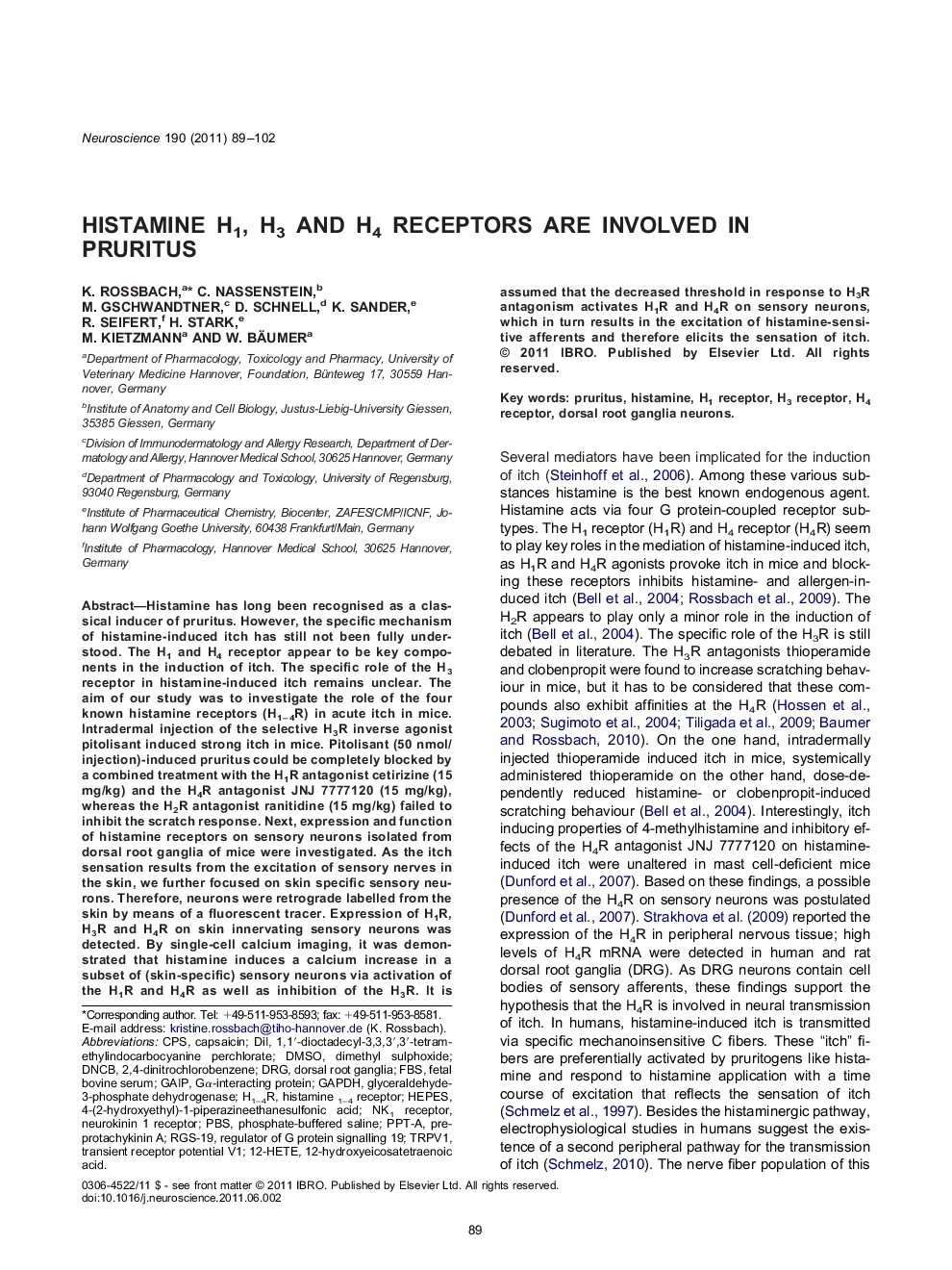| کد مقاله | کد نشریه | سال انتشار | مقاله انگلیسی | نسخه تمام متن |
|---|---|---|---|---|
| 6276263 | 1614886 | 2011 | 14 صفحه PDF | دانلود رایگان |

Histamine has long been recognised as a classical inducer of pruritus. However, the specific mechanism of histamine-induced itch has still not been fully understood. The H1 and H4 receptor appear to be key components in the induction of itch. The specific role of the H3 receptor in histamine-induced itch remains unclear. The aim of our study was to investigate the role of the four known histamine receptors (H1-4R) in acute itch in mice. Intradermal injection of the selective H3R inverse agonist pitolisant induced strong itch in mice. Pitolisant (50 nmol/injection)-induced pruritus could be completely blocked by a combined treatment with the H1R antagonist cetirizine (15 mg/kg) and the H4R antagonist JNJ 7777120 (15 mg/kg), whereas the H2R antagonist ranitidine (15 mg/kg) failed to inhibit the scratch response. Next, expression and function of histamine receptors on sensory neurons isolated from dorsal root ganglia of mice were investigated. As the itch sensation results from the excitation of sensory nerves in the skin, we further focused on skin specific sensory neurons. Therefore, neurons were retrograde labelled from the skin by means of a fluorescent tracer. Expression of H1R, H3R and H4R on skin innervating sensory neurons was detected. By single-cell calcium imaging, it was demonstrated that histamine induces a calcium increase in a subset of (skin-specific) sensory neurons via activation of the H1R and H4R as well as inhibition of the H3R. It is assumed that the decreased threshold in response to H3R antagonism activates H1R and H4R on sensory neurons, which in turn results in the excitation of histamine-sensitive afferents and therefore elicits the sensation of itch.
â¶H1 and H4 receptor antagonists inhibit itch induced by blockade of the H3 receptor. â¶Activation of H1 and H4 receptors induces a calcium increase in sensory neurons. â¶Inhibition of the H3R induces a calcium response in sensory neurons. â¶Skin-specific murine dorsal root ganglia neurons express histamine receptors.
Journal: Neuroscience - Volume 190, 5 September 2011, Pages 89-102